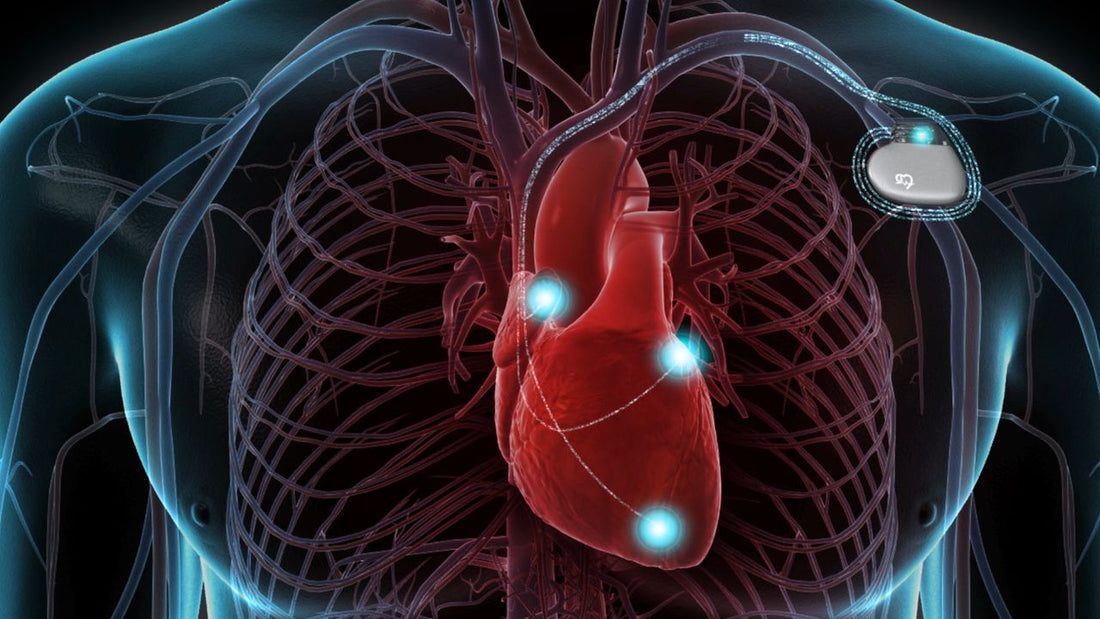
Implantable Defibrillators Market Expected to Reach USD 12 Billion by 2030
Share

The global Implantable Defibrillators Market, valued of USD 12 billion by 2030. This expansion represents a compound annual growth rate CAGR of 4% during the forecast period by 2030. According to recent reports from Next Move Strategy Consulting, the rise in heart disease prevalence and the increasing adoption of implantable defibrillator technology are driving this growth.
Click Here for Your FREE Sample!
What Are Implantable Defibrillators?
An implantable defibrillator is a small, battery-powered device that is surgically placed in the chest of a patient to monitor heart rhythms. The device is designed to deliver shocks when it detects life-threatening irregularities, such as abnormal heartbeats or sudden cardiac arrest. With heart disease being the leading cause of death globally, these devices play a crucial role in reducing mortality rates.
Key Market Drivers
The key factors propelling the growth of the Implantable Defibrillators Market include rising incidences of cardiac diseases, largely attributed to lifestyle choices such as smoking, lack of physical activity, and poor nutrition. The growing prevalence of diabetes also contributes to the market's expansion. Additionally, favorable reimbursement policies and the rapidly increasing global population are providing significant growth opportunities for the market.
However, the market does face challenges such as the high cost of these devices and associated risks like infections in the chest area and bleeding around the heart, which could impede growth. Despite these challenges, the increasing global mortality rates from heart diseases and cardiac arrests are expected to provide ample opportunities for market players.
Market Segmentation
The Implantable Defibrillators Market is segmented based on product type and geography. Product types include:
- Transvenous Implantable Cardioverter-Defibrillators (T-ICDs)
- Subcutaneous Implantable Cardioverter Defibrillators (S-ICDs)
- Cardiac Resynchronization Therapy Defibrillators (CRT-D)
Geographically, the market spans across:
- North America: Dominates the market due to advanced healthcare infrastructure and the high prevalence of heart disease.
- Asia-Pacific: Expected to exhibit significant growth as manufacturers introduce cost-effective solutions for the densely populated region, where unhealthy lifestyle habits are contributing to rising cardiovascular diseases.
- Europe and Rest of the World (RoW): These regions are also expected to show steady growth during the forecast period.
North America's Leading Role
North America is the dominant market for Implantable Defibrillators, thanks to the region's advanced medical facilities and a high rate of heart disease-related mortality, which fuels the demand for life-saving devices like defibrillators.
Asia-Pacific’s Emerging Market
The Asia-Pacific region is forecast to show substantial growth. Manufacturers in this region are focusing on providing cost-effective defibrillator solutions to meet the needs of its large and rapidly growing population. The rising prevalence of cardiovascular diseases, driven by lifestyle factors like high-fat diets and smoking, is expected to further drive the market in this region.
Conclusion
The Implantable Defibrillators Market is on a strong growth trajectory, driven by increasing heart disease rates, advancements in medical technology, and favorable healthcare policies. As the global population ages and cardiac arrests and heart disease rates continue to rise, the market for implantable defibrillators is poised for substantial expansion. Although challenges like high device costs and associated health risks exist, the demand for life-saving devices and growing awareness of heart disease will create ample opportunities for manufacturers to thrive in this expanding market.